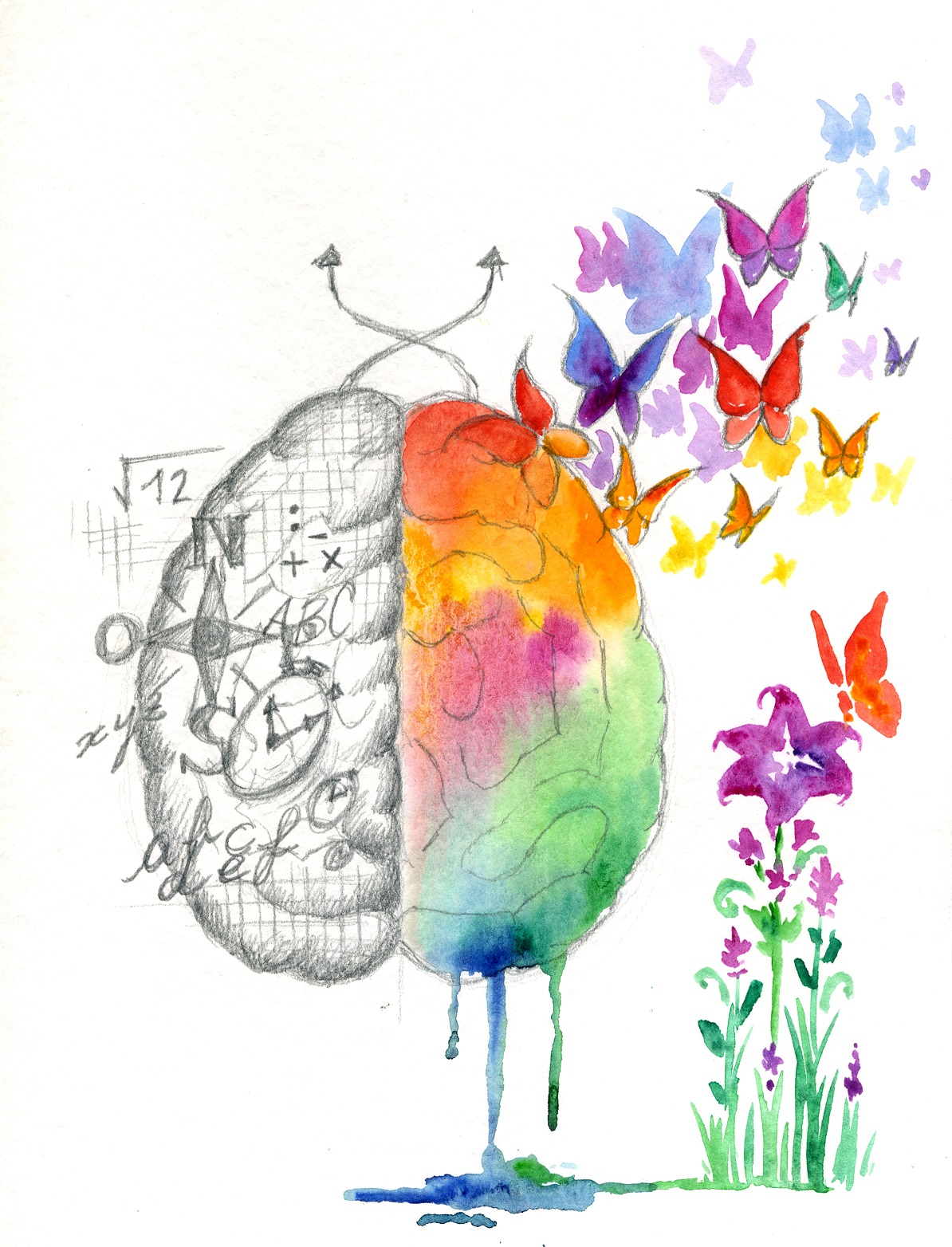
Just as there is no one way to happiness and contentment, so too can the unique mental and physical fields of influence we’ve cleaved in life be interpreted through numerous developmental lenses. Duhem’s thesis reminds us that for any number of facts there can be multiple hermeneutics (i.e. theories of interpretation), and so a most logical deduction would be one regarding all theoretical approaches to personal constitution and development as potentially true or coming-to-be. Emphasizing the progressive idea that neural integration and empathic interpersonal relations are intimately associated with psychological health, the cutting-edge science of interpersonal neurobiology (Siegel, 2012) and the tripartite division (id-ego-superego) of the human mind elucidated by Sigmund Freud (Hall, 1954) bequeath to us very rich theoretical soil for grounding that life experience.
Spurred to critical analysis and investigation by brilliant contemporaries like Jean-Martin Charcot and Charles Darwin, the latter rationalized conscious and unconscious phenomena as processes with neurobiological substrates and immortalized the conceptual scaffold in book entitled, The Project for a Scientific Psychology (Freud, 1968). While Freud’s ambition to couch the human mind within cerebral cytoarchitectonics was far too ambitious and progressive for its time, it planted an unprecedented seed for the future scientific marriage of evolutionary biology, neuroscience, cognitive and social psychology, and the genesis of the unconscious. Owed to this conceptual integration is my enhanced understanding of annotating life experience in the context of both psychoanalytic theory and brain structure and function.
Personally, I have identified several instrumental moments in my life where the best contextualization is offered, believe it or not, by the Freudian lens. According to Freud’s repression model, consciousness is molded by instinctual drives and ego defenses (Dell & O’Neil, 2010). We must penetrate through this superficial uppermost layer encompassing a detailed record of contemporary psychic life if we are to understand the processes of sedimentation mediating the whole psyche. Freud assures us that beneath this dark veil of appearances are a succession of psychic strata, the preconscious and the unconscious, in which actualized mental contents await sensory expression. Lowest is a subterranean reserve that perpetually feeds a Hadean chamber crammed full of unobstructed sexual wishes and fantasies with inexhaustible psychic energy or libido. Just as the deepest layers of geological strata contain fossilized remains of plants and animals now extinct, so too does the unconscious contain a repertoire of traumatic memories. These manifest consciously as maladaptive and dysfunctional aspects of personality and unconsciously in symbolic dream content, exploding like land mines into consciousness each time the environment offers up the same cognitive, emotional, and physical stimuli implicated in the latent traumatic memory (Hall, 1954).
One thing standing out in my autobiographical history is a dark day I my early teens when I underwent a strange malady of unknown origin. It began sometime during the summer of January 1992 and came on gradually, perhaps over the course of a week. I woke up one morning feeling somehow not myself. Suddenly, things didn’t feel right within me anymore. Something had changed but there was no tangible physiological measure able to describe the intrinsic qualities precisely so that it could be grasped by others and by the contemporary medical intellect. A few weeks later, I stumbled upon a television program on HIV and became mortified when a young man of about twenty-five began describing conversion symptoms accompanied by subjective feelings of wrongness. I vividly remember dashing into the bathroom and staring at my reflection in the mirror. Was this what was wrong with me? Was I HIV positive?
In hindsight, I’d rate it as the most traumatic event of my life. Explicit in my recollection of this event is the salvific act of dropping to the ground beside a Byzantine icon of the Virgin and Child, a humble posture reminiscent of a bucolic supplicant kneeling before royalty. After having made the unconscious decision to “forget” the traumatic experience, I began experiencing recurrent night terrors of finding skeletal remains and putrefying flesh in the subterranean earth beneath my residential dwelling. These went the way of the dinosaurs after a full-blood examination revealed that my beliefs had been irrational and that I’d unjustly inveigled myself in a self-destructive web of unfounded fears. In this particular case the conviction of impending death was so traumatic in nature that it could not be contained in the receptacle of consciousness. Once activated primitive defenses displaced the traumatizing mental stimulus to the unconscious where it underwent transformation into a symbol-image dissociated from self before manifesting in dream content as tangible human remains. As Freud himself would have predicted, emancipation from the repressed virulent impression led to emancipation from the recurrent nightmares.
Moreover, the psychosexual pattern of development may be domain-specific and apply to social and environmental circumstances where sexual undertones (or overtones for that matter) predominate. In hindsight there were subtle sexual undertones in the behaviour of my parents. Growing up in a traditional home in which the prevailing ethos gravitated about sentimentality and affection, my formative years were spent emulating my multitalented father–I sung traditional Greek music, took up a musical instrument, played soccer, loved cars, and tried my hand at cooking. Explicit memories and anecdotal accounts from members of the extended family all vindicate the unconscious desire to become my father, a phenomenon clarified by Freud as self-indoctrination into a gender appropriate-role to escape persecution for wishing to possess the opposite-sexed parent (Ellenberger, 2008). Even though I find myself strongly resistant to the conceptual crux of the Oedipal Complex, I will not deny the fact that the correlated imprinting behavior became salient exactly when the psychoanalytic situation predicted it, too, should come to pass.
Imbued with cooperative and competitive modes of neural processing, the neurobiological model of hemispheric communication has much to say about the trajectory of my life. Owing to the ground-breaking research of Galin, Johnstone, Nakell, & Herron (1979) we now know that the dominant and nondominant hemispheres of the brain function autonomously in early childhood and depend on the maturation of the corpus collosum past the age of ten in order to become fully integrated and coordinated (Cozolino, 2010). In fact, it is highly probable that the constitution of conscious awareness is built upon discrete analogic and digital representations from the environment in the first decade, meaning that the child may be able to flit back and forth between holistic and monosemantic processing systems (Siegel, 2012).
The decreased inhibitory potential of the dominant hemisphere, the “interpreter,” in sieving out the primary process input, implicit memories, and random stimuli offered by the nondominant hemisphere during childhood is one way of explaining a profound metaphysical phenomenon I experienced at eight. One day, whilst purposelessly gazing out into the rectangular backyard of my Hickford Street residence from behind a security door, I perceived what appeared to be a colossal swallowtail butterfly standing motionless before the rotary washing line. It maintained an atypical posture, its supernal wings outstretched for a few minutes before vanishing into thin air. After a few minutes I ventured out into the backyard in search of the mysterious creature, understanding full well the significance of what I’d just seen but lacking the mature set of executive prefrontal functions needed to intellectualize it. The vicissitudes of time have neither distorted nor whitewashed this veridical, transient intrusion from explicit memory. Often, I’ll tell myself that the absence of sufficient interhemispheric linkage at that age made possible a multimodal construction of visual reality, enabling me to temporarily access the world “as it really is” before further synapse elimination and structural alterations in primary sensory and motor cortex sealed the access point forever.
In hindsight, my nonphysicalist leanings can be traced back to this single moment. Something else concerning to the culmination of the first decade is my fascination with genre fiction, especially drama, thriller, and horror. I still remember the first fiction book I ever read, Blood Games by Richard Laymon. Against all odds my mechanisms for explicit memory recall can still retrieve some of the characters, settings, and “crescendos” or twists in the unfolding of the plot of that work. From about ten onwards I petitioned my parents for books written by the aforementioned Lamon, Dean Koontz, and Stephen King, a true master of horror writing. Being firm believers in education and intellectual stimulation, they complied with every request and so instead of engaging in activities more pertinent to my age group (i.e. watching television and movies), I devoured suspenseful and stimulating narratives from the opulent comfort of my cerulean-tinted room. By the time I’d reached sixteen I’d read about a hundred and fifty fiction books. On reflection I have yet to ascertain whether the obsession with the artificial worlds of creative writers was simply an epiphenomenon of my innate curiosity and desire to comprehend the diversity of the human condition, or whether fictional narrative somehow catalyzes teleological movement towards neural integration in the maturing brain. What was the impetus for pathological reading?
Siegel has much to say about this curious phenomenon. The integrative neural processes occurring during formative periods of development can be vertical, dorso-ventral, or interhemispheric (Siegel, 2012). The importance of the latter, according to Trevarthen, cannot be overstated because the anterior commissures and corpus callosum combined is “the only pathway through which the higher functions of perception and cognition, learning and voluntary motor coordination can be unified (Siegel, 2012, pp. 341).” Associational neurons are the modus operandi, linking intricate representational processes of the hemispheres together. Concerning the importance of narrative in interhemispheric coordination, scientific treatises activate only the digital, temporal processes of the dominant hemisphere whereas myths, legends, folktales, and fictional works activate both the aforementioned and the holistic, analogic processes of the nondominant hemisphere (Siegel, 2012). In light of this interdisciplinary schema, it appears that our genetic and neurological constitution come with in-built “attractions” for higher-order activities (i.e. reading novels, stories) able to activate and hence integrate dissociated processing systems. Albeit unconscious, there’s a reason as to why I picked up novels and not mathematical or scientific corpuses.
Looking back over the unique fields of influence cleaved by my own self over time, I can confidently declare that the discrete events comprising our personal autobiographies may be contextualized through the sociocognitive lens of different developmental theories. The select phenomena I have examined in this paper lent themselves to Freudian and micro-level neurobiological interpretation, however others are much better elucidated by Bronfenbrenner’s ecological systems theory, Erickson’s psychosocial stages, and the Jungian phenomenology of the mother-son lover archetypal dyad. Veridical perceptions are not the exclusive building blocks of any one scientific and psychological discipline and any narrative scaffold we might assumed in relation to them will, more often than not, shed light upon the multitudinous rind of cognitive schemata operant outside our conscious awareness. This broader understanding of human development necessitates the adoption of a clearly definable phenomenological weltanschauung flexible enough to recourse to alternative theoretical and psychotherapeutic models when required, but not so flexible, accommodating, and Protean as to lose sight of its central tenets and become entangled in everlasting conceptual drift.
Bibliography
Cozolino, L. (2010). The neuroscience of psychotherapy: healing the social brain (Norton Series on Interpersonal Neurobiology). WW Norton & Company.
Dell, P.F., & O’Neil, J.A. (Eds.). (2010). Dissociation and the dissociative disorders: DSM-V and beyond. Routledge.
Ellenberger, H.F. (2008). The discovery of the unconscious: the history and evolution of dynamic psychiatry. Basic Books.
Galin, D., Johnstone, J., Nakell, L., & Herron, J. (1979). Development of the capacity for tactile information transfer between hemispheres in normal children. Science, 204(4399), 1330-1332.
Hall, C. S. (1954). A primer of Freudian psychology.
Siegel, D. J. (2012). The developing mind: how relationships and the brain interact to shape who we are. Guilford Press.









